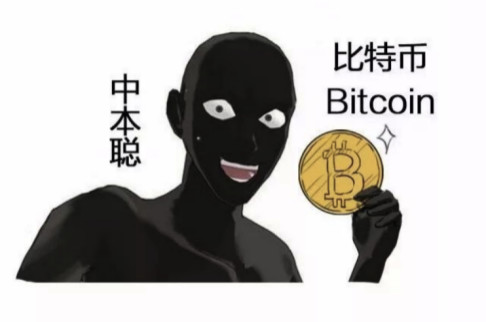BTC: The King of All Cryptos
Though outsiders to the crypto community might not know what BTC means, they must have heard about Bitcoin, which is abbreviated as BTC. Moreover, Bitcoin has also got a nickname: XBT.
Speaking of BTC, we must give credit to a guy named Satoshi Nakamoto, the father of Bitcoin. It all started in 2008. As we all know, that year witnessed a global financial crisis, which laid the groundwork for the birth of BTC.
Rumors have it that someone named Satoshi Nakamoto published BTC’s white paper Bitcoin: A Peer-to-Peer Electronic Cash System on a P2P foundation website on November 1, 2008, and BTC was also born around that time. Two months later, BTC’s genesis block was mined on January 3, 2009.
BTC got rid of the constraints of third-party institutions through a distributed ledger, which Satoshi Nakamoto calls “blockchain”. Back then, users who were willing to provide their CPU’s computing power to run a specific software could become “miners”. In addition to getting a new currency through mining, miners also built a network while contributing their computing power to jointly maintain the blockchain.
At the time, many countries, banks, and government agencies regarded BTC as a virtual commodity and did not think of it as a currency. BTC didn’t have any value until a guy bought 2 pizzas with 10,000 BTC he had mined.

(The most expensive pizza order ever)
Later on, the booming BTC market has gone through many ups and downs, yet the identity of Satoshi Nakamoto, the father of BTC, has always remained a mystery. Some say that he is from the NSA, and some believe that he is a financial expert, but no one knows for sure.

A wonderful thing about BTC is that it’s for everyone: anyone could mine Bitcoin! However, BTC mining comes with a limit as the maximum number of bitcoins that can be mined is 21 million, which avoids inflation. BTC does not rely on any central authorities to issue new money or maintain transactions. In the BTC network, such operations are executed by the blockchain, which uses digital encryption algorithms and network-enabled defense mechanisms to guard against 51% attacks and ensure the security of assets and transactions. The BTC transaction records are kept and maintained by all computers within the network, and the validity of each transaction must be verified by the blockchain.
It has been suggested that the extensive recognition and adoption of BTC technology has led mankind into the blockchain era.
That said, what are the features of the king of all cryptos? Let’s dive into it now:
1. Decentralization
BTC is the first distributed virtual currency, and the entire BTC network consists of users, without any central bank. Decentralization keeps BTC secure and free.
2. Global circulation
BTC can be managed on any computer connected to the Internet. Anyone can mine, buy, sell, or receive bitcoins no matter where they are, making it so fascinating to many miners and users.
3. Exclusive ownership
Any operation related to BTC will require your private key, which can be isolated and stored via any storage medium, and no one can get it but you. Owning BTC gives users an exclusive status and ensured security.
4. Low transaction fees and no hidden costs
The BTC network charges a certain fee for each transaction to ensure faster execution. In addition, as a payment method that transfers funds from A to B, BTC does not require cumbersome quotas or procedures, and users only need to know the BTC address of the other party to make a payment, which is super convenient!
5. Cross-platform mining
Many tech geeks are crazy for Bitcoin! Miners can explore the computing power of different hardware on many platforms, and mining BTC is not only profitable but also entertaining.
The circulating market cap of BTC has now reached $163.877 billion, and the block reward is halved about every 4 years. We just witnessed the third BTC halving on May 12, 2020 at the block height of 630,000, and the block reward went down from 12.5 BTC to 6.25 BTC. By the year 2140, no new bitcoins will be mined, and the final circulating supply of BTC will be no higher than 21 million.
If you plan to join the crypto community, you might as well start by buying BTC since it might point you to a new way of wealth generation.
Learn more about Bitcoin (BTC) through the channels below:
Official website: https://bitcoin.org
Block explorer: https://explorer.coinex.com/
Market cap ranking: https://coinmarketcap.com/currencies/bitcoin
Buy BTC: https://www.coinex.com/exchange/BTC-USDT
BTC asset management: https://wallet.coinex.com/download








